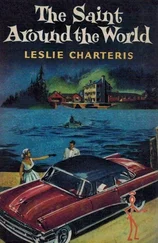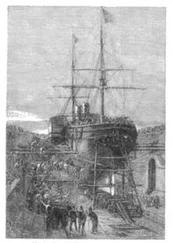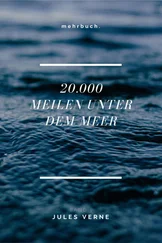“What are they, captain?” I asked.
“Here I’m naturally led into telling you how the Nautilus is maneuvered.”
“I can’t wait to find out.”
“In order to steer this boat to port or starboard, in short, to make turns on a horizontal plane, I use an ordinary, wide-bladed rudder that’s fastened to the rear of the sternpost and worked by a wheel and tackle. But I can also move the Nautilus upward and downward on a vertical plane by the simple method of slanting its two fins, which are attached to its sides at its center of flotation; these fins are flexible, able to assume any position, and can be operated from inside by means of powerful levers. If these fins stay parallel with the boat, the latter moves horizontally. If they slant, the Nautilus follows the angle of that slant and, under its propeller’s thrust, either sinks on a diagonal as steep as it suits me, or rises on that diagonal. And similarly, if I want to return more swiftly to the surface, I throw the propeller in gear, and the water’s pressure makes the Nautilus rise vertically, as an air balloon inflated with hydrogen lifts swiftly into the skies.”
“Bravo, captain!” I exclaimed. “But in the midst of the waters, how can your helmsman follow the course you’ve given him?”
“My helmsman is stationed behind the windows of a pilothouse, which protrudes from the topside of the Nautilus’s hull and is fitted with biconvex glass.”
“Is glass capable of resisting such pressures?”
“Perfectly capable. Though fragile on impact, crystal can still offer considerable resistance. In 1864, during experiments on fishing by electric light in the middle of the North Sea, glass panes less than seven millimeters thick were seen to resist a pressure of sixteen atmospheres, all the while letting through strong, heat-generating rays whose warmth was unevenly distributed. Now then, I use glass windows measuring no less than twentyone centimeters at their centers; in other words, they’ve thirty times the thickness.”
“Fair enough, captain, but if we’re going to see, we need light to drive away the dark, and in the midst of the murky waters, I wonder how your helmsman can—”
“Set astern of the pilothouse is a powerful electric reflector whose rays light up the sea for a distance of half a mile.”
“Oh, bravo! Bravo three times over, captain! That explains the phosphorescent glow from this so-called narwhale that so puzzled us scientists! Pertinent to this, I’ll ask you if the Nautilus’s running afoul of the Scotia, which caused such a great uproar, was the result of an accidental encounter?”
“Entirely accidental, sir. I was navigating two meters beneath the surface of the water when the collision occurred. However, I could see that it had no dire consequences.”
“None, sir. But as for your encounter with the Abraham Lincoln … ?”
“Professor, that troubled me, because it’s one of the best ships in the gallant American navy, but they attacked me and I had to defend myself! All the same, I was content simply to put the frigate in a condition where it could do me no harm; it won’t have any difficulty getting repairs at the nearest port.”
“Ah, commander,” I exclaimed with conviction, “your Nautilus is truly a marvelous boat!”
“Yes, professor,” Captain Nemo replied with genuine excitement, “and I love it as if it were my own flesh and blood! Aboard a conventional ship, facing the ocean’s perils, danger lurks everywhere; on the surface of the sea, your chief sensation is the constant feeling of an underlying chasm, as the Dutchman Jansen so aptly put it; but below the waves aboard the Nautilus, your heart never fails you! There are no structural deformities to worry about, because the double hull of this boat has the rigidity of iron; no rigging to be worn out by rolling and pitching on the waves; no sails for the wind to carry off; no boilers for steam to burst open; no fires to fear, because this submersible is made of sheet iron not wood; no coal to run out of, since electricity is its mechanical force; no collisions to fear, because it navigates the watery deep all by itself; no storms to brave, because just a few meters beneath the waves, it finds absolute tranquility! There, sir. There’s the ideal ship! And if it’s true that the engineer has more confidence in a craft than the builder, and the builder more than the captain himself, you can understand the utter abandon with which I place my trust in this Nautilus, since I’m its captain, builder, and engineer all in one!”
Captain Nemo spoke with winning eloquence. The fire in his eyes and the passion in his gestures transfigured him. Yes, he loved his ship the same way a father loves his child!
But one question, perhaps indiscreet, naturally popped up, and I couldn’t resist asking it.
“You’re an engineer, then, Captain Nemo?”
“Yes, professor,” he answered me. “I studied in London, Paris, and New York back in the days when I was a resident of the earth’s continents.”
“But how were you able to build this wonderful Nautilus in secret?”
“Each part of it, Professor Aronnax, came from a different spot on the globe and reached me at a cover address. Its keel was forged by Creusot in France, its propeller shaft by Pen & Co. in London, the sheet-iron plates for its hull by Laird’s in Liverpool, its propeller by Scott’s in Glasgow. Its tanks were manufactured by Cail & Co. in Paris, its engine by Krupp in Prussia, its spur by the Motala workshops in Sweden, its precision instruments by Hart Bros. in New York, etc.; and each of these suppliers received my specifications under a different name.”
“But,” I went on, “once these parts were manufactured, didn’t they have to be mounted and adjusted?”
“Professor, I set up my workshops on a deserted islet in midocean. There our Nautilus was completed by me and my workmen, in other words, by my gallant companions whom I’ve molded and educated. Then, when the operation was over, we burned every trace of our stay on that islet, which if I could have, I’d have blown up.”
“From all this, may I assume that such a boat costs a fortune?”
“An iron ship, Professor Aronnax, runs 1,125 francs per metric ton. Now then, the Nautilus has a burden of 1,500 metric tons. Consequently, it cost 1,687,000 francs, hence 2,000,000 francs including its accommodations, and 4,000,000 or 5,000,000 with all the collections and works of art it contains.”
“One last question, Captain Nemo.”
“Ask, professor.”
“You’re rich, then?”
“Infinitely rich, sir, and without any trouble, I could pay off the ten-billion-franc French national debt!”
I gaped at the bizarre individual who had just spoken these words. Was he playing on my credulity? Time would tell.
CHAPTER 14
The Black Current
Table of Contents
THE PART OF THE planet earth that the seas occupy has been assessed at 3,832,558 square myriameters, hence more than 38,000,000,000 hectares. This liquid mass totals 2,250,000,000 cubic miles and could form a sphere with a diameter of sixty leagues, whose weight would be three quintillion metric tons. To appreciate such a number, we should remember that a quintillion is to a billion what a billion is to one, in other words, there are as many billions in a quintillion as ones in a billion! Now then, this liquid mass nearly equals the total amount of water that has poured through all the earth’s rivers for the past 40,000 years!
During prehistoric times, an era of fire was followed by an era of water. At first there was ocean everywhere. Then, during the Silurian period, the tops of mountains gradually appeared above the waves, islands emerged, disappeared beneath temporary floods, rose again, were fused to form continents, and finally the earth’s geography settled into what we have today. Solid matter had wrested from liquid matter some 37,657,000 square miles, hence 12,916,000,000 hectares.
Читать дальше












